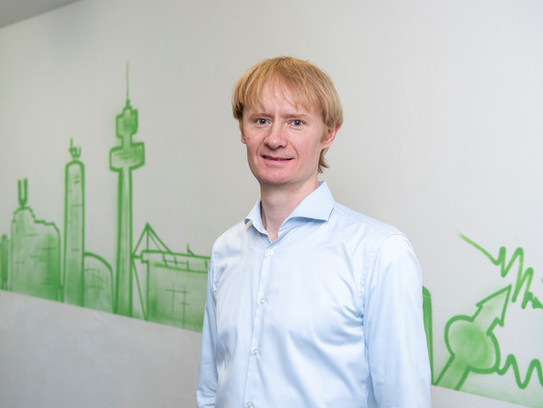Dortmund physicists develop ultra-robust time crystal
- Research

Crystals, or more precisely spatial crystals, are periodic arrangements of atoms over large length scales. This order results in the fascinating appearance of crystals with smooth facets, such as in gemstones. As space and time are often treated at the same level in physics, for example in the special theory of relativity, the 2012 Nobel Prize winner in physics Frank Wilczek from the Massachusetts Institute of Technology (MIT) postulated that, in addition to crystals in space, there must also be crystals in time. For this to be the case, one of their physical properties would have to spontaneously begin to vary periodically over time, even though the system does not experience a corresponding periodic disturbance.
The possibility of such time crystals was the subject of controversial scientific debate for several years, but was quickly shown in the cinema: for example, a time crystal played a central role in the film "Avengers: Endgame" by MARVEL (2019). As of 2017, it was indeed possible to realize a few demonstrations of a possible time crystal. However, these were systems that - unlike Wilczek's original idea - are subjected to a temporal excitation with a certain periodicity, but then react with another period twice as long. A crystal that shows temporally periodic behavior, although the excitation is time-independent, i.e. constant, was first demonstrated in 2022 in a so-called Bose-Einstein condensate. However, the crystal only lived for a few milliseconds.
Millions of times longer service life

The Dortmund physicists working with Dr. Alex Greilich have now designed a special crystal made of the material indium gallium arsenide, in which the nuclear spins act as a reservoir for the time crystal. The crystal is continuously illuminated so that a nuclear spin polarization is formed through interaction with electron spins. And it is precisely this nuclear spin polarization that then spontaneously forms oscillations, corresponding to a time crystal. At the current stage of experiments, its lifetime is at least 40 minutes, which is ten million times longer than previously demonstrated, and could potentially last much longer.
The period of the crystal can be varied over wide ranges by specifically changing the experimental conditions. However, it is also possible to advance into areas in which the crystal "melts", i.e. loses its periodicity. These are also interesting, as chaotic behavior, which can be maintained over long periods of time, then becomes apparent. This is the first time that theoretical tools have been used to analyze the chaotic behaviour of such systems.









